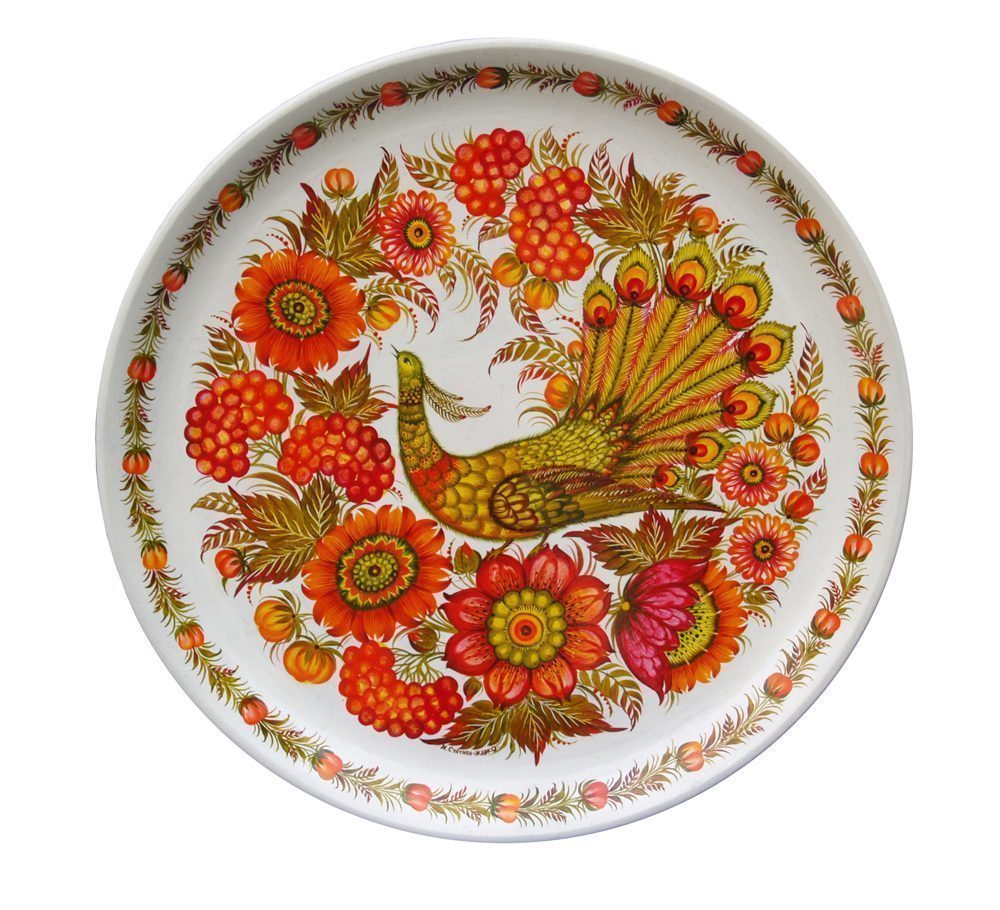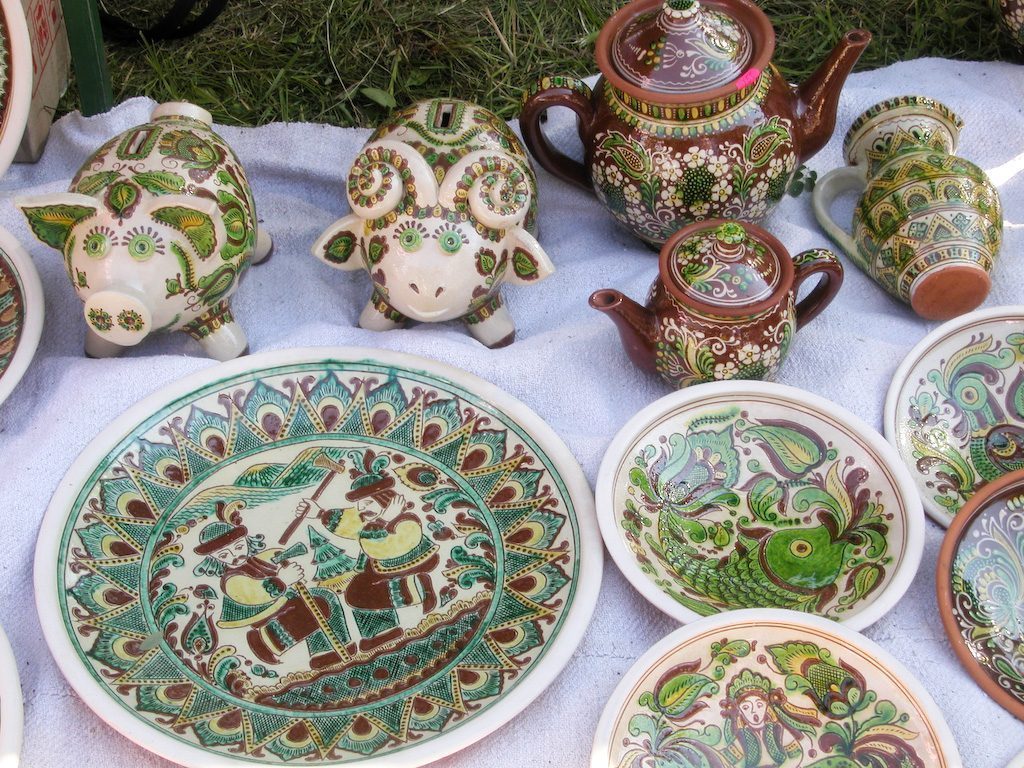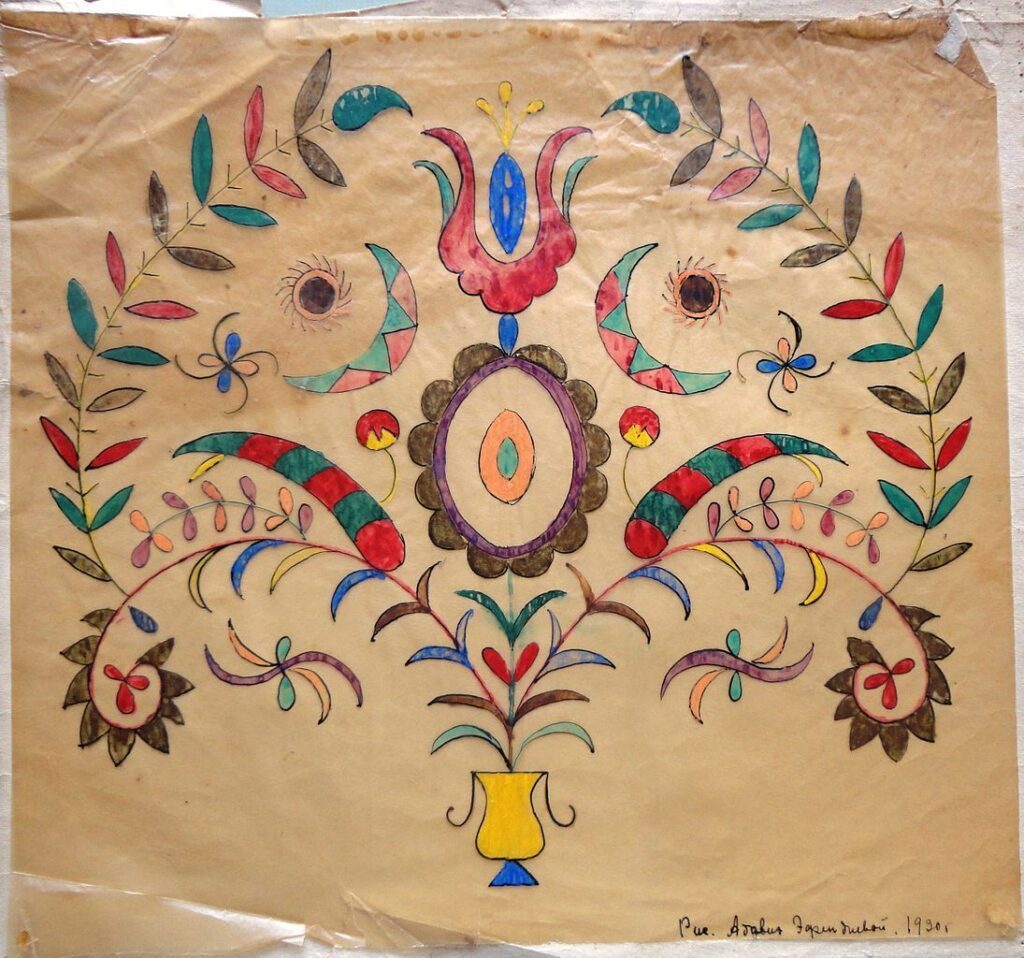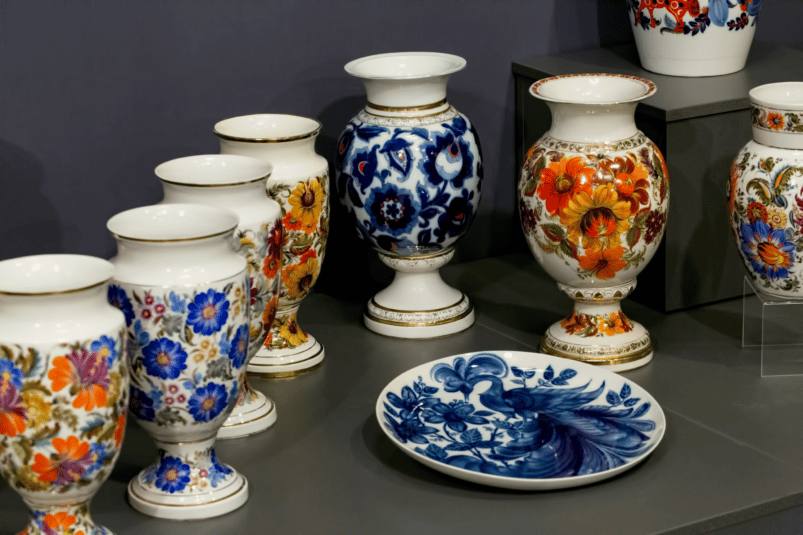Ukraine has a number of crafts and traditional arts inscribed on UNESCO’s lists of intangible cultural heritage. We’ve highlighted a few that demonstrate the historic artistry of the people of Ukraine.
Petrykivka Decorative Art

Petrykivka painting is named after the village of Petrykivka, situated in Dnipropetrovsk (a central region of Ukraine). Traditionally, this style of painting is believed to begin with mural painters, who would paint bright floral patterns onto white houses. However, over time, the style has become used more widely and is now commonly applied to paper and canvas.
Bright, vivid flowers are the primary aspect of most Petrykivka paintings. Other natural elements, such as animals or vegetation, complete the paintings. However, every Petrykivka artist will bring an originality to their works, meaning that while the style is consistent, no two paintings will be the same.
Local families from the village will likely have at least one practitioner of the style, as it is often taught by female family members to their children. It is taught at local schools, and all local children are given the opportunity to learn the style. While the style has now travelled across the country, villagers are allowed to use a trademark to guarantee Petrykivkan authenticity.
Kosiv Ceramics

The tradition of Kosiv ceramics began in the 18th century, and resulted in an iconic style of design with only a few colours. The clay is locally sourced, and then covered with a layer of slip (a mixture of water and clay), on which the design is engraved. Once the clay has dried, the potter will paint onto the clay with some metal oxides. After firing, these oxides transform into striking yellow and green hues, giving the ceramics their iconic look.
The artists are free to decorate their ceramics with their own designs, often choosing to represent local history, nature, and folklore.
The tradition of Kosiv painted ceramics was inscribed on the Representative List of the Intangible Cultural Heritage of Humanity in 2019.
Örnek Ornamental Symbolism

Crimean Tatar communities have a distinctive set of symbols, known as Örnek, which are used by Tatar artisans. The traditional craftspeople use the symbols within most of their arts, from weaving to glass-painting. The symbols are not simply aesthetic; each ornament holds a meaning, which has been passed down from old to young for centuries among Tatar communities. In this way, the Örnek patterns can be read: a rose (a female symbol) might be combined with a poplar tree (a male symbol), to tell a story of family.
Therefore, teaching these traditional crafts requires more than just craftsmanship – Örnek is about both ‘reading’ and ‘writing’ the symbols. Every piece of artwork is filled with meaning, but it requires the viewer to understand the symbolism of Örnek. The ornamentation is not just artwork, but also an expression of community. Continuing to teach it not only means that the craft is not forgotten – but also ensures that younger Tatars are able to connect to the history of their people.
The Crimean Tatar community has been settled in the Crimea region for many centuries, but has often been the victim of targeted discrimination programmes. Following the Second World War, many Crimean Tatars were deported from Crimea and were not granted right to return until 1989.
Örnek and related knowledge was inscribed on the Representative List of the Intangible Cultural Heritage of Humanity in 2019.

